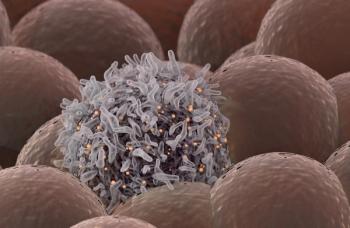
Genetics of Melanoma Tumor Shape Immunotherapy Benefits
Using whole-exome sequencing, researchers were able to define the genetic basis for deriving benefit from treatments that block CTLA-4 in melanoma.
Using whole-exome sequencing, researchers were able to define the genetic basis for deriving benefit from treatments that block cytotoxic T-lymphocyte antigen 4 (CTLA-4) in melanoma,
“Our use of whole-exome sequencing to identify a genetic basis associated with a benefit from CTLA-4 blockade provides proof of principle that tumor genomics can inform responses to immunotherapy,” wrote Alexandra Snyder, MD, from Memorial Sloan Kettering Cancer Center, and colleagues.
Snyder and colleagues used tumor tissue for patients with melanoma who had been treated with the CTLA-4 blocking drugs ipilimumab and tremelimumab. They characterized somatic mutations and candidate neoantigens generated from the mutations, and tested neoantigen peptides for the ability to activate lymphocytes.
Results showed a significant difference in mutation load between those patients assigned these drugs that showed a clinical benefit and those with minimal or no benefit. This association was found in both a discovery set of samples and a validation set.
In addition, in the discovery set, this higher mutational load was associated with a significant improvement in overall survival; however, in the validation set there was only a trend toward improved survival.
“These data indicate that a high mutational load correlates with a sustained clinical benefit from CTLA-4 blockade, but that a high load alone is not sufficient to impart a clinical benefit, because there were tumors with a high mutational burden that did not respond to therapy,” the researchers wrote.
Looking at the genome-wide somatic neoantigen analysis, the researchers were able to identify a neoantigen landscape that was present in the tumor samples with a strong response to CTLA-4 blockade in both the discovery and validation sets. However the researchers noted that because of the size of the discovery set, they “cannot exclude the possibility that additional biologically relevant epitopes exist and conversely that there are biologically relevant epitopes that were predicted bioinformatically but were not expressed or presented in patients with a minimal benefit or no benefit.”
Newsletter
Stay up to date on recent advances in the multidisciplinary approach to cancer.


















































































